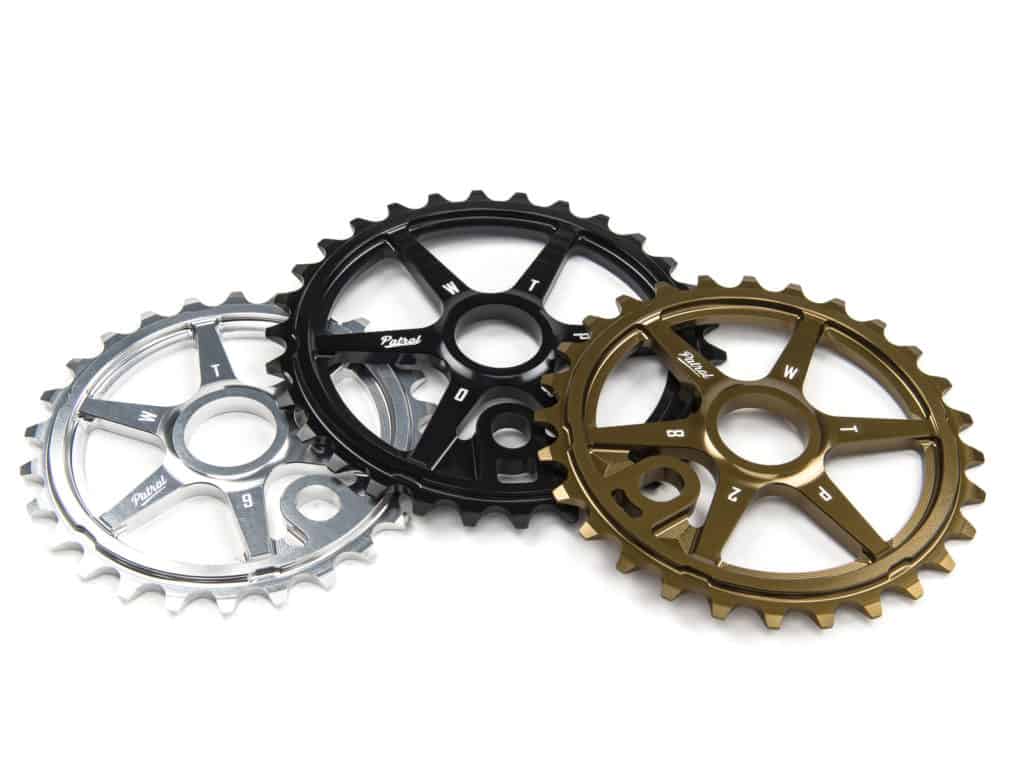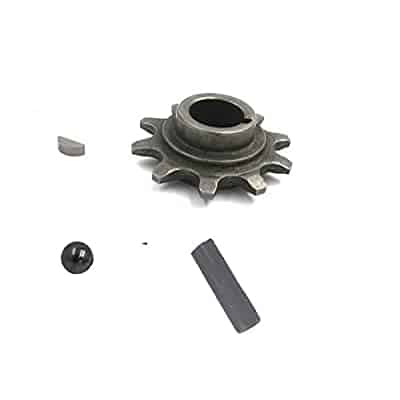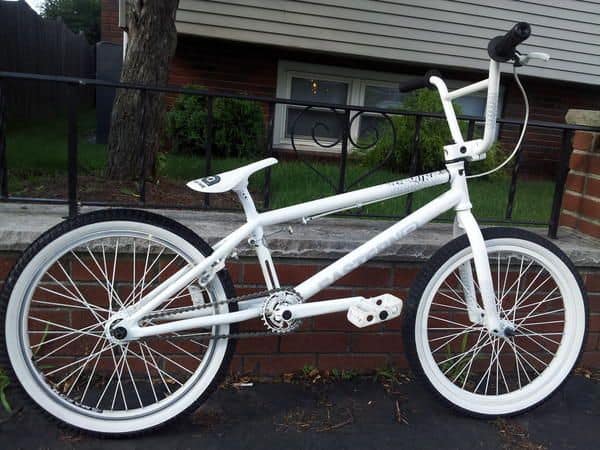Avid BMX riders often argue that the size of the sprocket will always depend on the application of the bike.
The argument, as it stands, is that the best way to determine the best sprocket size is to offset purpose against functional gear ratio, which is dependent on rear cog sizing and brake mount placement.
If that’s the case, then why do BMX bikes have small sprockets in the first place?
BMX bikes have small sprockets because they look better, save weight, are stronger, and don’ get in the way of the rider if they ever choose to grind, especially with right sided drive. Also, smaller sprockets won’t bash and even offers better acceleration when doing tricks.

Riding a BMX bike with big sprockets is something you simply don’t want to do. The chain brakes fast and that’s a big blow.
After all, what’s the point of running a 44-16 when you can a 25-9 and have a similar gear ratio, ride optimally, and save on weight at the same time?
If there’s one thing that you shouldn’t forget as far as sprocket size is concerned is that it’s all about the gear ratio. The bike should be easier to pedal, go farther, and do so with minimal crank rotations.
6 Reasons Why BMX Bikes Do Have Small Sprockets.
It turns out that I’m not the only one who has ever been curious about why BMX bikes have small sprockets instead of bigger ones.
And clearly, manufacturers seem to have all had one important agenda with smaller-sized sprockets. From where I sit, I’m confident that it comes down to better performance for the long-term.

If anything, the following are the reasons why BMX bikes have smaller sprockets:
1. Small Sprockets Give More Surface Contact
One of the differences between big and small sprockets is how they bend.
Small sprockets tend to bend les easily, which is why they can generate great force with the least effort from a rider.
That explains why BMX riders are able to go up steep slopes without experiencing muscle strains.
Keep in mind that BMX isn’t good for long distance even if they do have small sprockets, as there are other factors that determine how farther you can go.
2. Small Sprocket Facilitate Better Pedaling
BMX bikes have smaller sprockets to help riders get a smooth pedaling experience.
By lowing the chain such that it gets into direct contact with the top brakes, you don’t have to struggle to control the bike in different trails.
Since small sprockets facilitate easy pedaling, the result is a more fine-tuned riding experience where you use less force to stay on the move.
3. They Generate Great Force With Less Effort
The reason why a cyclist can steer their bike well regardless of the nature of the terrain is that they have better contact with the pedals’ surface.
More often than not, smaller sprockets on a BMX bike will give you more surface contact, which makes pedaling easier than it would be if the bike had bigger sprockets.
And it doesn’t end there.
If you think about it, it’s hard to tell the nature of the trails out there unless you’ve mapped your route beforehand.
Route mapping isn’t something you have to do when if you have a BMX bike with small sprockets.
These sprockets are strong, durable, and endurable enough to navigate over obstacles without engaging the object that may be lying on the terrain.
4. Small Sprockets Are Light And Easy To Maneuver
The smaller sprockets on BMX bikes are lightweight and for that reason they are easy to engage and maneuver.
Given that they don’t add too much weight to the bike or take a toll on you, smaller sprockets make BMX bike easier to ride for an extended period. Not to mention they can easily maneuver treacherous terrains easily.
5. Small Sprockets Make BMX Bikes Good For Off-Road
As I said before, it’s hard to know how your cycling router will look like unless you’ve done some route mapping.
But then again, you don’t the luxury of a lot of time to do your search and your focus is more tuned to getting on that bike and engaging the pedal for a fun ride.
If you already have a BMX bike with small sprockets, mapping your route may not be much of a big deal per se. That’s because the can easily go off road just fine.
Usually the small sprockets are agile enough to handle off road conditions with a great degree of efficiency.
6. Smaller Sprockets Ensure Better Performance
Since smaller sprockets are lighter and easy to maneuver, they make the best option for racing BMX. These ones don’t interfere with a rider’s movement. Instead, they smoothen rides especially when riding on winding and harsh roads.
Sure, smaller sprockets require some force to steer, but that’s usually a lot less because they are agile and smooth. The smoothness means less stress on the chain and enhanced riding experience.
There’s nothing as fun as riding a BMX without struggling to pedal the bike.
While you’ll have to engage your lower muscles quite extensively, the amount of effort you invest on a BMX with smaller sprockets is far less so you won’t have to worry about muscle strains at all.
There is also the benefit of moving faster with the least pedaling possible, which makes BMX bikes with small sprockets better than bikes that have the larger ones.
Frequently Asked Questions
1. What Is The Smallest BMX Sprocket?
The smallest BMX sprocket is an 11-tooth although be as small as 8 teeth with the use of a micro-drive rear hub.
2. Are All BMX Bike Sprockets The Same?
Old BMX bikes have the 48-teeth sprockets, which is no longer the standard these days. Today, the most common sizes are 25 and 28 teeth with 23,7mm bore.
3. Is A Smaller Sprocket Faster?
A smaller sprocket tends to be faster than a bigger one.

Ideally, if you substitute a small rear or larger front sprocket, you will lower the “taller” gearing and get more speed for a given number of engine revolution per minute.
Similarly, substituting a smaller front or large rear sprocket will most definitely give you less speed for a given number of revolution per minute.
To put this in simple terms, a combination of a smaller rear sprocket and a large front sprocket allows you to ride your bike faster whenever you pedal at the same speed.
Final Thoughts: ”Why Do BMX Bikes Have Small Sprockets?”
As you can see, BMX bikes do have small sprockets for many good reasons. We can sum up these reason by stating that the inclusion of the sprockets of this size generally make BMX bikes bike to maneuver and also benefit your body.
Note that some race BMX bikes still do have big sprocket, and there is a reason why. Such bikes have a U-style rear brake right at the top of the frame’s chainstay.
Swapping the current big sprocket with a smaller one would lower the chai so much that it gets into contact with the chain and make the bike difficult to pedal.
There’s the temptation to want to change the size of the sprocket from big to small after reading this guide. If you’ve already considered this option, I suggest that you take the bike to a local BMX shop repairers for a more professional advice, as that’s beyond the scope of this guide.